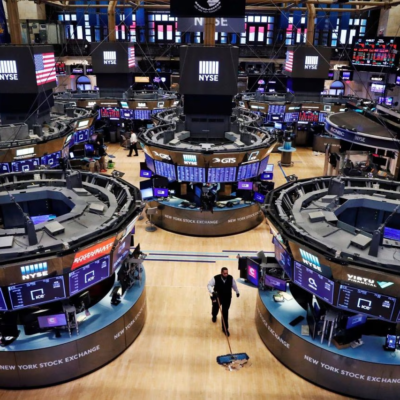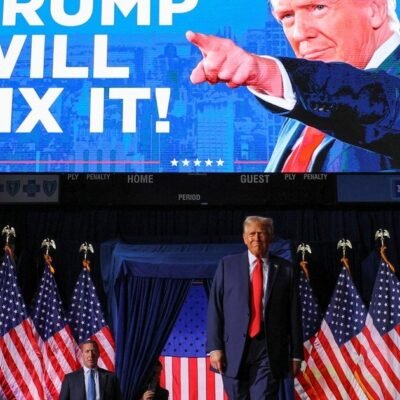Philadelphia Federal Reserve President Patrick Harker recently issued a warning about inflation risks and broader economic concerns, stating that the central bank must tread carefully before making any decisions about interest rate cuts. While some investors have been optimistic about a cooling inflation trend, Harker’s statements offer a reality check.
Speaking at a financial conference, Harker emphasized that inflation may still have “some upside risk,” even as recent data shows signs of softening. “While I am encouraged by the progress we’ve made, I believe we are not out of the woods yet,” he said.
This cautious stance adds weight to the ongoing debate within the Federal Reserve and among economists: Should interest rates be held higher for longer to ensure inflation stays in check?
Learn more about the Fed’s monetary policy approach
Economic Growth Slows, But Inflation Threat Persists
Despite a gradual cooling of the economy, core inflation remains sticky. Harker highlighted that while goods prices have generally stabilized, service sector inflation continues to hover at concerning levels. The Fed official pointed to housing, health care, and labor market imbalances as areas of concern that could reignite inflation.

Recent Consumer Price Index (CPI) data showed a slight decline in annual inflation, but underlying components — especially shelter and medical services — remain stubborn. Harker said, “We cannot afford to take our foot off the brake too early.”
This sentiment echoes the views of other Federal Reserve policymakers who are urging patience in pivoting toward monetary easing. The U.S. central bank raised interest rates aggressively in 2022 and 2023 to curb soaring inflation but has since kept them steady in 2024.
Get the latest CPI updates from the U.S. Bureau of Labor Statistics
Markets React Cautiously to Hawkish Tone
Wall Street responded with a slight dip following Harker’s remarks, with both the S&P 500 and Dow Jones Industrial Average giving up early gains. Traders had been pricing in at least two rate cuts by the end of the year, but expectations may now shift depending on future inflation readings and labor market performance.
“The market hates uncertainty, and when a key Fed voice like Harker signals caution, investors pay attention,” said Daniel Moore, a senior analyst at Grant Economics. Bond yields also edged higher, reflecting revised expectations for the path of interest rates.
Labor Market Strength Adds Complexity to Fed’s Decision
One major factor complicating the Fed’s inflation fight is the continued strength of the U.S. labor market. Unemployment remains low, and job creation, while slowing, is still above historical averages.
Harker acknowledged this dynamic, stating that the tight labor market could keep upward pressure on wages, feeding into service inflation. “We’re in a unique moment — the economy hasn’t followed the usual playbook post-pandemic,” he noted.
He added that while wage growth has moderated slightly, it is still running ahead of productivity in some sectors, raising the risk of a wage-price spiral if not carefully managed.
Explore the latest U.S. employment data
Harker on Interest Rates: Too Soon to Cut
Harker made it clear that while he’s optimistic inflation can return to the Fed’s 2% target, now is not the time to cut interest rates. “I think we need more consistent data that inflation is not just slowing, but that it will stay low,” he said.

This aligns with comments from other Fed officials who have said the central bank needs “greater confidence” before adjusting its policy stance. The Fed has held its benchmark rate steady at a 5.25%-5.50% range since July 2023.
Investors looking for a summer rate cut may have to temper their expectations unless inflation drops more significantly in upcoming reports.
Read the latest Federal Reserve meeting minutes
Global Factors Could Influence Domestic Inflation
Harker also touched on global developments that could affect U.S. inflation and economic performance. He mentioned ongoing trade tensions, rising energy costs, and geopolitical instability as potential catalysts for new inflationary pressures.
“The global economy is interconnected,” Harker said. “Any disruption in major supply chains, like oil or semiconductors, could reverse our progress on inflation quickly.”
His comments come at a time when oil prices have shown volatility due to unrest in the Middle East and production decisions by OPEC+ nations. Additionally, tariffs and trade barriers between the U.S., China, and Europe remain a source of uncertainty.
Track global oil price trends and economic impacts
Consumer Behavior May Delay Fed’s Easing Plans
Consumer spending, which drives about two-thirds of U.S. GDP, has remained surprisingly resilient. Despite higher borrowing costs, Americans continue to spend on travel, dining, and entertainment. Harker flagged this as another reason the Fed should remain cautious.
“If consumers don’t pull back, we may see a delay in inflation easing further,” he noted. Credit card balances and personal debt are increasing, but so far, delinquencies remain manageable, adding to the complex picture the Fed faces.
What Comes Next? Watch the Data
Going forward, Harker emphasized that the Fed’s decisions will be entirely data-dependent. “We are not on autopilot,” he said. “Each rate decision will be based on where the economy and inflation are heading.”
Analysts suggest that upcoming CPI and Personal Consumption Expenditures (PCE) data, along with quarterly GDP reports, will play a critical role in shaping Fed policy for the second half of the year.
Until then, markets, businesses, and households alike may need to brace for continued high interest rates — at least for now.
Also Read – U.S. CEO Confidence Drops Sharply Due to Global Trade Fears





